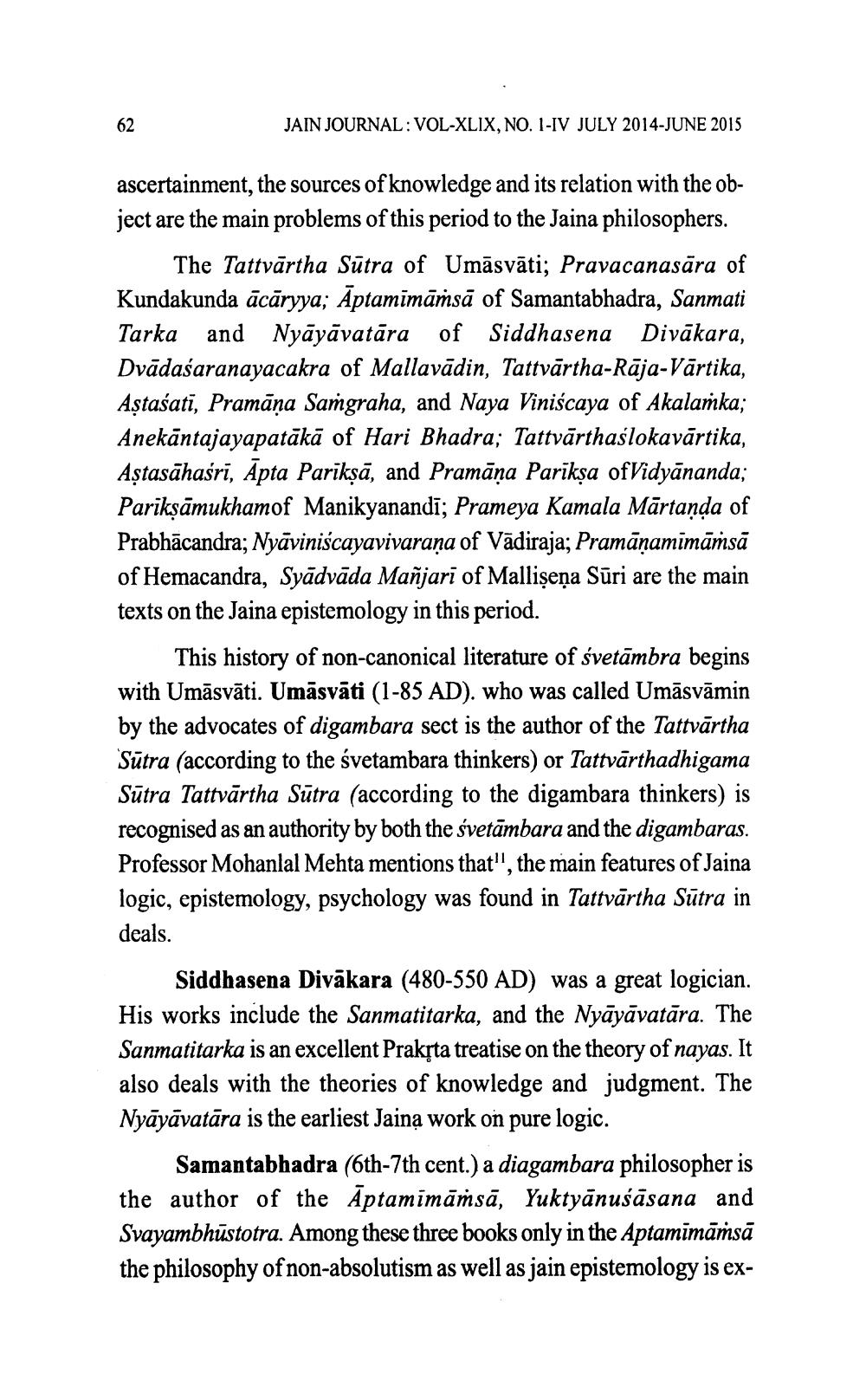________________
62
JAIN JOURNAL: VOL-XLIX, NO. 1-IV JULY 2014-JUNE 2015
ascertainment, the sources of knowledge and its relation with the object are the main problems of this period to the Jaina philosophers.
The Tattvärtha Sutra of Umāsvāti; Pravacanasara of Kundakunda ācāryya; Āptamīmāṁsā of Samantabhadra, Sanmati Tarka and Nyāyāvatāra of Siddhasena Divākara, Dvādasaranayacakra of Mallavadin, Tattvārtha-Raja-Vārtika, Aṣtasati, Pramāņa Samgraha, and Naya Viniścaya of Akalamka; Anekantajayapatākā of Hari Bhadra; Tattvärthaslokavārtika, Aṣtasahasri, Apta Parikṣā, and Pramāņa Parīkṣa ofVidyananda; Parikṣāmukhamof Manikyanandi; Prameya Kamala Mārtaṇḍa of Prabhācandra; Nyāviniscayavivaraṇa of Vadiraja; Pramāṇamimāṁsā of Hemacandra, Syādvāda Mañjarī of Malliṣeņa Sūri are the main texts on the Jaina epistemology in this period.
This history of non-canonical literature of svetämbra begins with Umāsvāti. Umāsvāti (1-85 AD). who was called Umāsvāmin by the advocates of digambara sect is the author of the Tattvärtha Sūtra (according to the svetambara thinkers) or Tattvārthadhigama Sūtra Tattvärtha Sutra (according to the digambara thinkers) is recognised as an authority by both the svetambara and the digambaras. Professor Mohanlal Mehta mentions that", the main features of Jaina logic, epistemology, psychology was found in Tattvärtha Sutra in deals.
Siddhasena Divakara (480-550 AD) was a great logician. His works include the Sanmatitarka, and the Nyāyāvatāra. The Sanmatitarka is an excellent Prakṛta treatise on the theory of nayas. It also deals with the theories of knowledge and judgment. The Nyāyāvatāra is the earliest Jaina work on pure logic.
Samantabhadra (6th-7th cent.) a diagambara philosopher is the author of the Aptamimāmsā, Yuktyānuśāsana and Svayambhustotra. Among these three books only in the Aptamīmāṁsā the philosophy of non-absolutism as well as jain epistemology is ex




